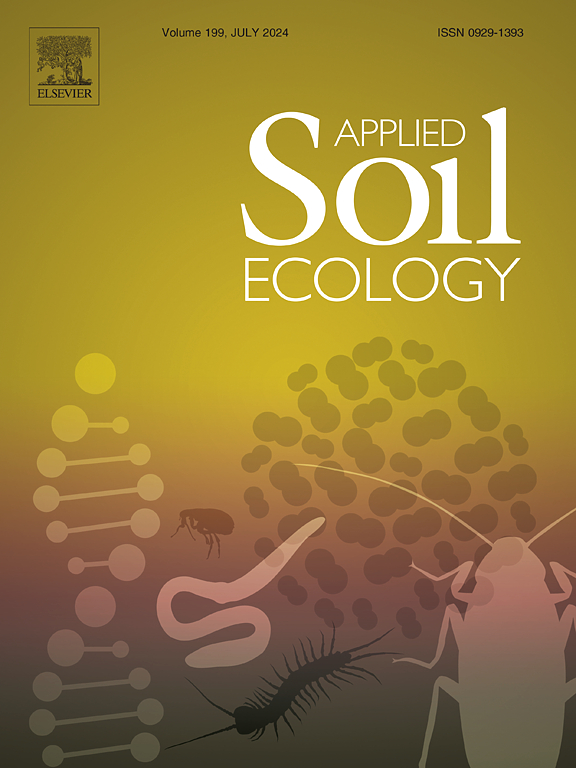Ammonia-oxidizing microorganisms overwhelm denitrifiers in determining the efficacy of DMPP in upland soils
IF 4.8
2区 农林科学
Q1 SOIL SCIENCE
引用次数: 0
Abstract
The use of nitrification inhibitors (NIs) like 3,4-dimethylpyrazole phosphate (DMPP) in agricultural systems can effectively reduce nitrous oxide (N2O) emissions and nitrate (NO3−) leaching, but their effectiveness varies across different soils. This microcosm experiment evaluated the efficacy of DMPP and its impact on soil microbial communities in four upland soils in Northern China (Tianshui: TS, Shihezi: SHZ, Heze: HZ and Daxing: DX). Results indicated that DMPP exhibits varying inhibitory effects on N2O emissions across different soils. The key microbes mediating N2O emissions, particularly ammonia-oxidizing bacteria (AOB), are the primary contributors to this variability. Specifically, DMPP led to a substantial reduction in N2O emissions in TS soil, inhibiting 81.3 % of emissions by suppressing both ammonia-oxidizing bacteria (AOB) and archaea (AOA). In SHZ soil, a 56.5 % reduction was observed, primarily attributed to decreased AOB amoA abundance. DX soil exhibited a 48.6 % reduction, linked to decreased AOA amoA abundance and an increase in nosZ-N2O reducers. Conversely, HZ soil showed the lowest reduction at 27.7 %, where DMPP stimulated the abundance of nirS-type denitrifiers while inhibiting unclassified Nitrosomonadales, the dominant AOB genus, which correlated positively with the net nitrification rate. Additionally, DMPP positively influenced norank Crenarchaeota-AOA in TS soil, and Bradyrhizobium-nosZ and Saccharothrix-narG in HZ soil, all negatively associated with N2O emissions. Soil properties such as total nitrogen, organic matter (SOM), ammonium (NH4+), pH, and available phosphorus (AP) levels significantly shaped microbial responses to DMPP. These findings underscore the importance of soil-specific characteristics in optimizing DMPP application strategies for reducing N2O emissions in upland soils.

求助全文
约1分钟内获得全文
求助全文
来源期刊

Applied Soil Ecology
农林科学-土壤科学
CiteScore
9.70
自引率
4.20%
发文量
363
审稿时长
5.3 months
期刊介绍:
Applied Soil Ecology addresses the role of soil organisms and their interactions in relation to: sustainability and productivity, nutrient cycling and other soil processes, the maintenance of soil functions, the impact of human activities on soil ecosystems and bio(techno)logical control of soil-inhabiting pests, diseases and weeds.
 求助内容:
求助内容: 应助结果提醒方式:
应助结果提醒方式:


